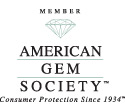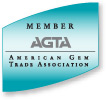Crank Up the Presses!
December 7th, 2019 by James L. Sweaney, CGA, FGA. GG
Recently, we examined an expensive pair of diamond earrings for a new client. She had purchased them from a local “Jewelry Mart” jeweler who provided this “appraisal.”
We easily identified the center diamonds as lab-grown diamonds. Each stone had the wording “Lab Grown” and an ID number laser etched on the girdle. Notice the “DESCRIPTION” supplied by the seller- the stones are not identified as lab-grown diamonds. While the color and clarity are about right, they are just labeled as “2 ROUND DIAMONDS EACH WEIGHT 1.03 CTS.”
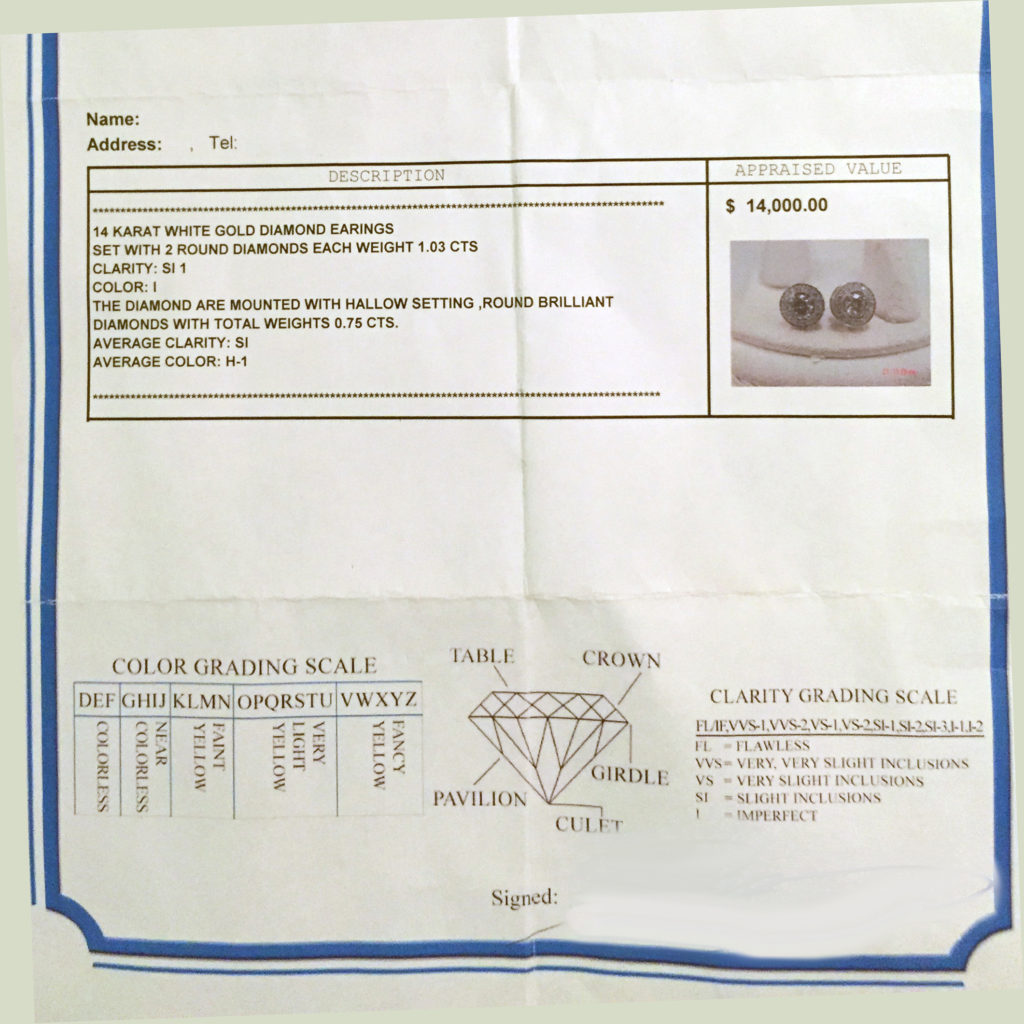
The “APPRAISED VALUE” of $14,000 is about 2 1/2 times what she stated she actually paid for the earrings. We see a lot to these “Feel Good” documents– some sellers use them to convince the buyer of a super “deal.” Turns out the price she paid would be a high retail price for similar earrings with lab grown diamond centers.
In a recent Federal Trade Commission (FTC) ruling, the term “diamond”, when used by itself, should only refer to natural diamonds mined from the earth. For synthetic (man-made) diamonds, the stones should clearly designated in close proximity as “lab grown, cultured, cultivated, man made, etc.” so that the buyer knows what they are buying.
Sellers should disclose the facts about what they are selling, especially when it makes a big difference in the value of an item. The wholesale price (dealer to dealer price) of lab grown diamonds of this size and quality is currently about 30% that of natural diamonds mined from the earth. 1 ct H SI lab grown diamonds currently wholesale for ~ $1400 per carat in our local jewelry district. The Gem Guide price book lists well cut natural mined diamonds of this quality for $5020 per carat wholesale. Do the math!
According to one of our favorite diamond suppliers, producers are flooding the market with man made diamonds, causing substantial price drops. If you don’t think lab grown diamonds are being mass produced, check out these images from the factories in Asia that are making lab grown diamonds.
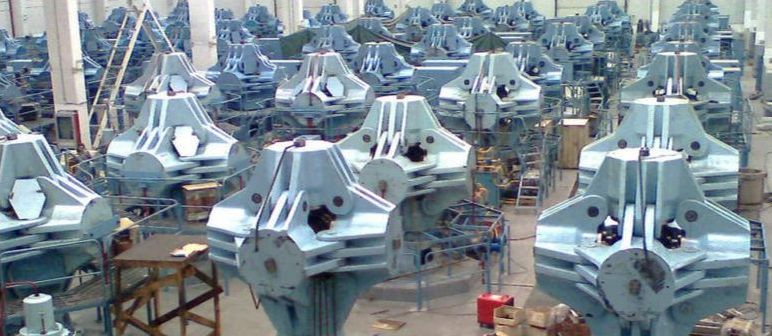
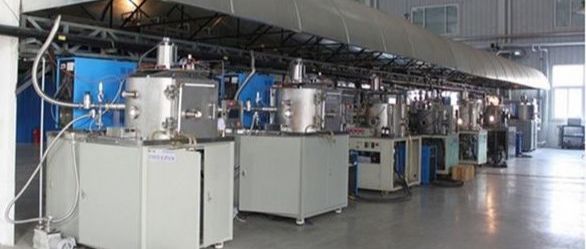
He also said that some major manufacturers and department stores are using lab grown diamonds in their jewelry. And, now that lab grown diamonds are available in tiny sizes (down to 1 mm), some vendors are mixing lab grown melee into parcels of natural mined diamonds. This influx of lab grown diamond creates a tremendous problem for consumers as well as jewelers selling to the public.
For consumers, we advise asking good questions about a diamond you might buy. Because of the big difference in value, you can see it’s very important to know the origin of the diamond- whether its natural mined or lab grown.
For retailers, identifying lab grown diamonds, especially the tiny ones, is tedious and difficult without the proper equipment. Last year, Mardon made a substantial investment in the latest hi-tech device for identifying lab grown diamonds — see our blog “GIA iD100 Diamond Testing at Mardon Jewelers”, published March 3, 2018. We test any diamond jewelry that doesn’t look natural.
If you’d like more information about lab grown diamonds and colored stones, please give us a call or stop by the shop. One of our four gemologists will be happy to answer your questions.
We’re located in the Canyon Crest Towne Centre, enter from Central into the center parking lot.
Tags: CVD diamonds, Gem Guide, HPHT diamonds, lab grown diamonds, The Gem Guide



